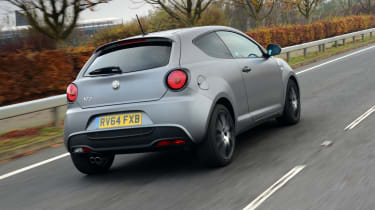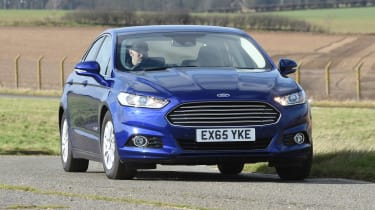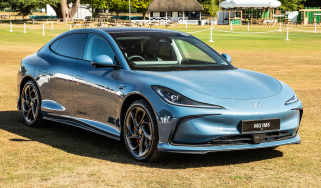Alfa Romeo MiTo Quadrifoglio Verde review
The Alfa Romeo MiTo Quadrofoglio Verde replaces the old Cloverleaf hot hatch, but it's seriously disappointing

We hoped that the MiTo QV would be a new dawn for Alfa, but it’s a disappointment. In isolation, the engine is reasonable, but the TCT gearbox reduces driving enjoyment, while the adaptive dampers deliver neither sporty handling nor a comfortable ride. Add in a high price tag and surprisingly poor fuel economy, and the MiTo lags well behind its rivals.
The MiTo was introduced in 2008, and the Quadrifoglio Verde (QV or Green Cloverleaf) is the performance flagship. This is the second-generation QV, and while it still has a 168bhp 1.4-litre turbo petrol engine, Alfa has added a six-speed TCT twin-clutch gearbox and adaptive dampers, while CO2 emissions and claimed economy are improved.
Its distinctive styling draws inspiration from the 8C Competizione sports car, while the shield grille is a nod to classic Alfas of the past. The bulging wheelarches and small windows add to the sporty looks, while the QV model has gloss-black detailing to help it stand out. You also get two-tone 18-inch alloys, twin exhausts and cloverleaf badges on the front wings.

Inside, there are more sporty touches. The dashtop and armrests get carbon fibre-effect plastic, and there are sports seats and a flat-bottomed steering wheel. As is tradition, there’s Italian acqua and benzina labelling for the water temperature and petrol gauges, although the QV’s mix of red-lit controls and white dials looks messy.
Used - available now

2020 BMW
5 Series
37,771 milesAutomaticPetrol2.0L
Cash £18,300
2020 Mercedes
C-Class Coupe
37,647 milesAutomaticDiesel2.0L
Cash £19,300
2018 Nissan
Qashqai
51,000 milesManualDiesel1.5L
Cash £12,290
2022 Mercedes
GLA
61,680 milesAutomaticPetrol1.3L
Cash £20,120Unlike the bigger Giulietta, here’s no launch-control function in the 167bhp MiTo, and its 1.4-litre engine is down on power compared to the 179bhp Ford Fiesta ST, and 197bhp Peugeot 208 GTI and Renault Clio RS. The MiTo QV scampers from 0-62mph in 7.3 seconds: brisk, sure, but we’re more used to hatchbacks dipping into the sixes by now, and the MiTo isn’t all that exciting when you push its alloy pedal into the carpet.

The new gearbox is part of the problem, not a solution. Unlike gearboxes in rival cars, manual mode doesn’t give full control, because the electronics throw in their own shifts when you’re not expecting them, so you’re never sure if a shift was one of yours or the car’s. The other option is full auto mode, but there’s no kickdown step in the throttle, so the gearbox can change down with little warning.
The transmission holds on to gears when accelerating, too. Again, it’s inconsistent in its actions, while the hesitant nature of its shifts can leave you without drive on the entry to a roundabout while it finds the right cog.

Unfortunately, it’s not just the gearbox that lets the QV down. The DNA switch on the dash changes driving modes, and while the difference between settings isn’t as harsh as that on lower spec models, none of the modes is very satisfying. Mode ‘D’ is the sportiest, so the gearbox holds on to gears, while the adaptive dampers are firmer and the steering weights up.
In ‘N’, the gearbox has better shifts, while the dampers and steering are both softened off, but the MiTo is no more comfortable than the conventionally damped Peugeot 208 GTi in this mode. All-weather mode ‘A’ boosts traction in slippery conditions, and is similar to ‘N’ in most of its settings.
In corners, the MiTo isn’t as composed or stable as rivals, while the steering delivers artificial feedback. In greasy conditions, the loose rear end can feel rather unnerving – so it’s probably a good thing that the car’s electronic stability control can’t be turned off.







